Winslow Homer’s Studio Will Open to the Public in September
Legroom on Airlines is Shrinking
If you’re feeling a little snug in that airline seat lately, realize that airlines are reducing legroom in economy seating as another egregious way to boost profits. In a story in yesterday’s Boston Globe, it was reported that Southwest has recently reduced legroom to add one additional row of seats. Other airlines simply want you to have an uncomfortable flight so you’ll spend more money on their premium economy seats, with extra legroom. Spirit is the worst in the industry, with a mere 28 inches between rows. Contrast that to JetBlue, whose airlines are often in the 32-33 inch range. The industry standard is now 31 inches between rows, down from 32 inches a decade ago. It’s only going to get worse until the government passes a passenger’s bill of rights that includes minimum legroom. Otherwise, economy class passengers might be hanging from the ceiling like moths in a cocoon.
The Hmong Women: Lessons in Sales, Sapa, Vietnam
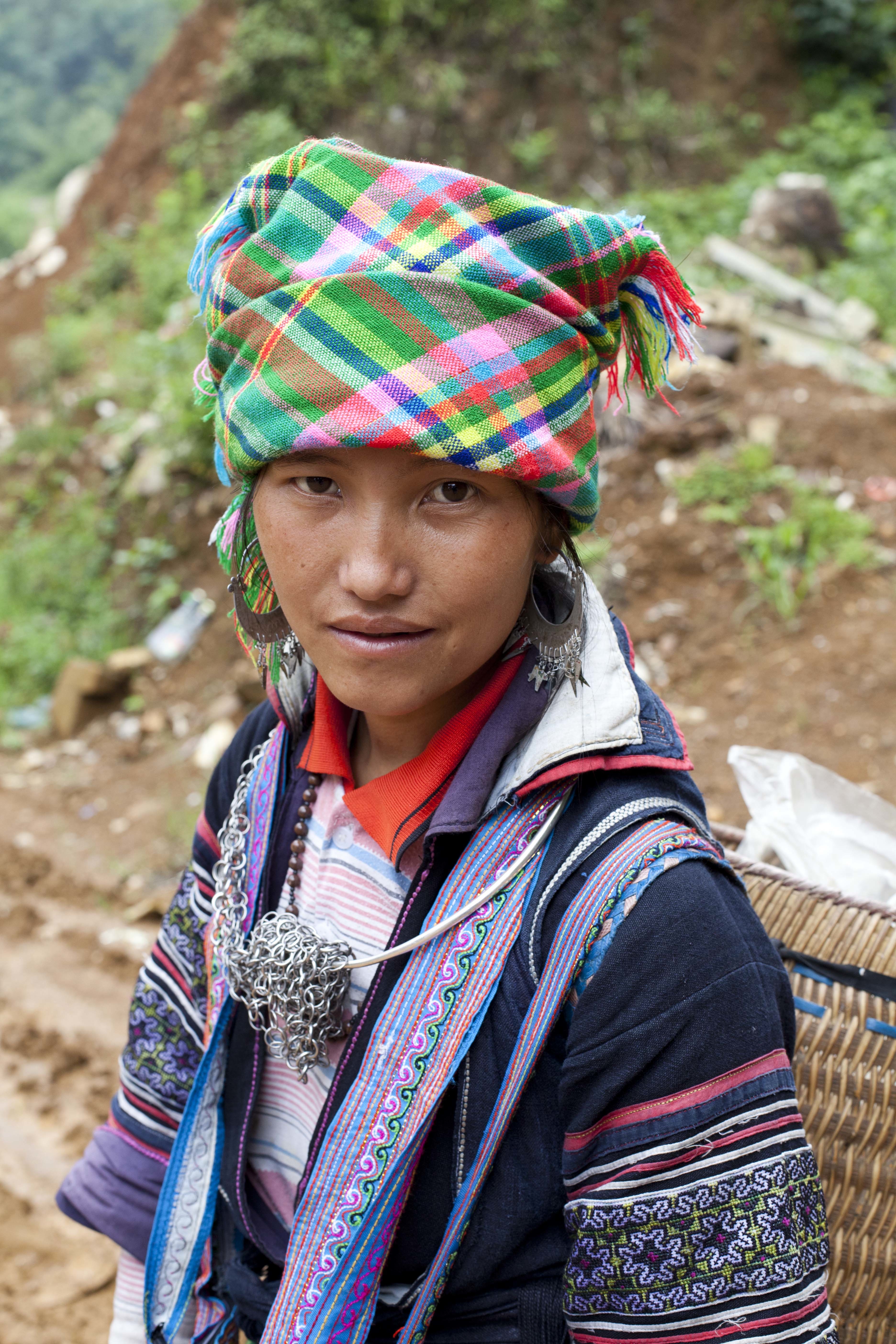 Guest Blog and Photo by Frances F. Denny
Guest Blog and Photo by Frances F. Denny
Costa Rica Highlights, Ending Each Trip at Finca Rosa Blanca
 On my last two trips to Costa Rica, I wisely spent the final night at Finca Rosa Blanca. High above the urban buzz of San Jose, Costa Rica, yet only a 25-minute drive from the international airport, Finca Rosa Blanca is a tranquil retreat nestled in the countryside of Heredia. Watch the colorful turquoise-browed motmots play in the centuries-old fig trees as you sip the inn’s organic-grown coffee. Then talk to the owners about everything they do to make the place sustainable. They are one of the few properties to receive five stars, the highest ranking from the country’s green tourism commission, and are asked to train other innkeepers on their environmentally-friendly practices. Local artisans, including painters, cast iron welders, and a local senior citizen center provide the artwork in the suites. The vegetables found in the restaurant’s innovative fare are grown organically in a greenhouse. Large solar panels create the heat in the pool and, instead of chlorine, they use an ionized system that keeps the water clean and clear. The inn also uses some of their profits to help fund the local high school. I love the mix of art, tasty food, and lush environs. It’s the perfect place to spend your final day in the country.
On my last two trips to Costa Rica, I wisely spent the final night at Finca Rosa Blanca. High above the urban buzz of San Jose, Costa Rica, yet only a 25-minute drive from the international airport, Finca Rosa Blanca is a tranquil retreat nestled in the countryside of Heredia. Watch the colorful turquoise-browed motmots play in the centuries-old fig trees as you sip the inn’s organic-grown coffee. Then talk to the owners about everything they do to make the place sustainable. They are one of the few properties to receive five stars, the highest ranking from the country’s green tourism commission, and are asked to train other innkeepers on their environmentally-friendly practices. Local artisans, including painters, cast iron welders, and a local senior citizen center provide the artwork in the suites. The vegetables found in the restaurant’s innovative fare are grown organically in a greenhouse. Large solar panels create the heat in the pool and, instead of chlorine, they use an ionized system that keeps the water clean and clear. The inn also uses some of their profits to help fund the local high school. I love the mix of art, tasty food, and lush environs. It’s the perfect place to spend your final day in the country.
Costa Rica, Ziplining Above the Rainforest Canopy Outside of Quepos
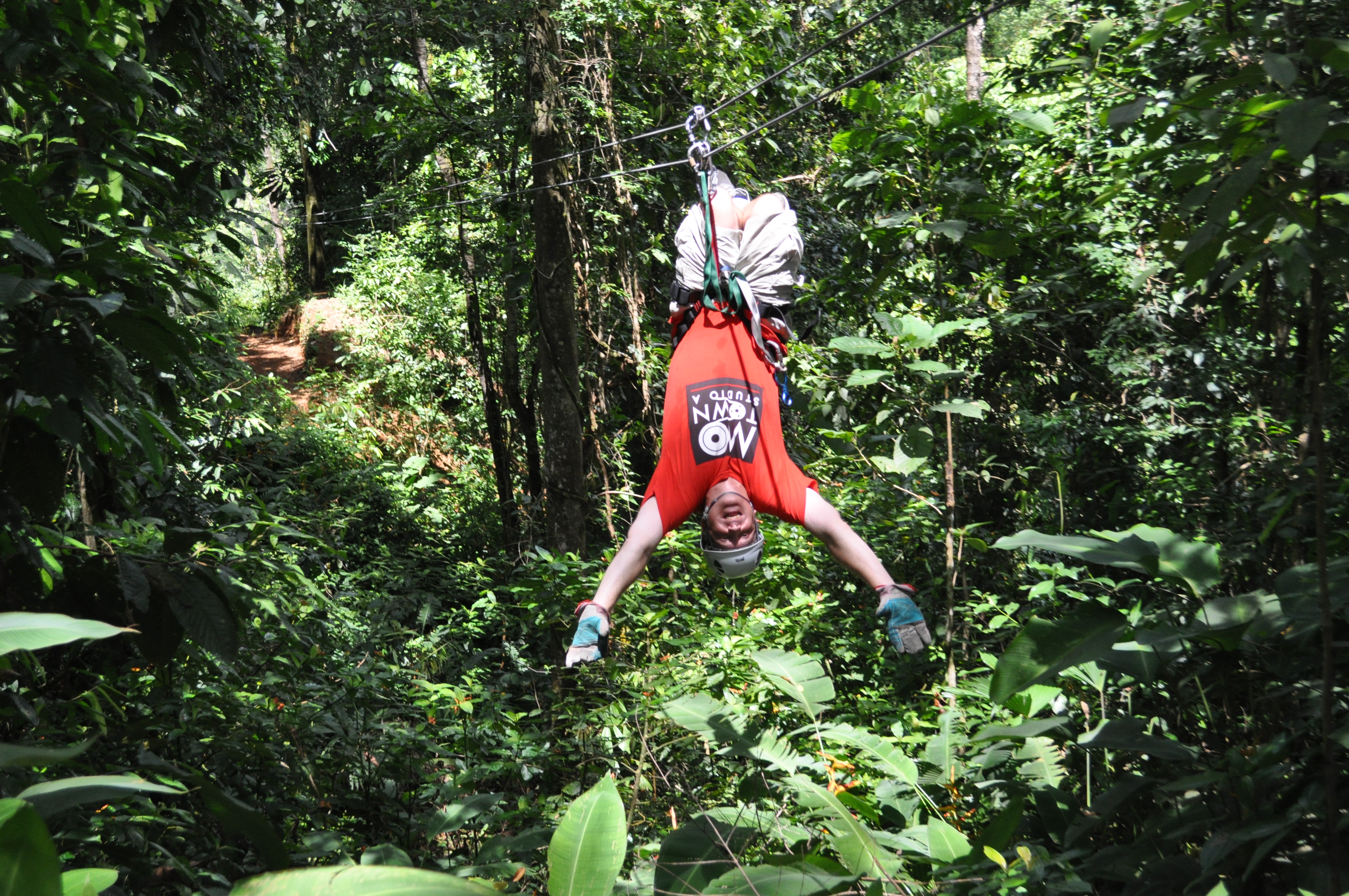 Each year around my birthday, I try to do something a little crazy. Just my way of celebrating another year of survival and reconfirming that yes, I’m very much alive. Often this adventure has something to do with confronting my fear of heights. Last year, I went rock climbing for the first time in the Canadian Rockies. This year, on my fourth trip to Costa Rica, having more than ample opportunity to zipline above the rainforest canopy, I finally agreed to go. Having the chance to cruise with my family was the extra push I needed. We drove through the palm oil plantations high up in the hills above Quepos on the central Costa Rican coast. The company we chose, MidWorld, were extremely professional, especially when attaching our harnesses and carabineers. Then we drove a little bit higher and it was time to bite the bullet. I was worried that my stomach would drop, like on a rollercoaster ride, a dreaded feeling I’d rather not have. Instead, it was just a smooth quick cruise on a cable just above the canopy of green. There were a total of ten platforms and two rappels down from the trees. Walking from one platform to the next, we spotted a toucan and a green and yellow poison dart frog. By the third or fourth zipline, I started to become so comfortable with the sport that I turned upside down. Then I tried to right myself, but my core needs a bit more Pilates before I can pull off that move. So I spent the entire zipline upside down, watching the blur of forest whiz by. I think I earned my chocolate raspberry birthday cake tonight.
Each year around my birthday, I try to do something a little crazy. Just my way of celebrating another year of survival and reconfirming that yes, I’m very much alive. Often this adventure has something to do with confronting my fear of heights. Last year, I went rock climbing for the first time in the Canadian Rockies. This year, on my fourth trip to Costa Rica, having more than ample opportunity to zipline above the rainforest canopy, I finally agreed to go. Having the chance to cruise with my family was the extra push I needed. We drove through the palm oil plantations high up in the hills above Quepos on the central Costa Rican coast. The company we chose, MidWorld, were extremely professional, especially when attaching our harnesses and carabineers. Then we drove a little bit higher and it was time to bite the bullet. I was worried that my stomach would drop, like on a rollercoaster ride, a dreaded feeling I’d rather not have. Instead, it was just a smooth quick cruise on a cable just above the canopy of green. There were a total of ten platforms and two rappels down from the trees. Walking from one platform to the next, we spotted a toucan and a green and yellow poison dart frog. By the third or fourth zipline, I started to become so comfortable with the sport that I turned upside down. Then I tried to right myself, but my core needs a bit more Pilates before I can pull off that move. So I spent the entire zipline upside down, watching the blur of forest whiz by. I think I earned my chocolate raspberry birthday cake tonight.
Costa Rica Highlights, Tirimbina Rainforest
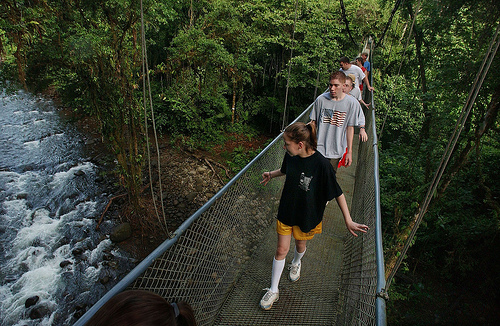 A mere 40 minutes north of Poas Volcano and you’ll reach the Sarapiqui Region of Costa Rica, another part of Costa Rica that’s mistakenly overlooked. Along the banks of the Sarapiqui River, you’ll find pockets of rainforest rich with birdlife and researchers studying the wildlife. On my last visit to the region, I stayed at La Selva Biological Station to pen a story on birdwatching while feasting my eyes on a variety of toucans and monkeys. This visit, I brought the kids to Tirimbina Rainforest to go on a chocolate tour, where we tasted heavenly chocolate straight from the cocoa pod. It was my son’s 16th birthday and the creamy chocolate sure beat any birthday cake I could have bought in town. On the way over to the cocoa pods, we crossed the longest canopy bridge in the country and spotted our first furry sloth resting under a large leaf of a tree.
A mere 40 minutes north of Poas Volcano and you’ll reach the Sarapiqui Region of Costa Rica, another part of Costa Rica that’s mistakenly overlooked. Along the banks of the Sarapiqui River, you’ll find pockets of rainforest rich with birdlife and researchers studying the wildlife. On my last visit to the region, I stayed at La Selva Biological Station to pen a story on birdwatching while feasting my eyes on a variety of toucans and monkeys. This visit, I brought the kids to Tirimbina Rainforest to go on a chocolate tour, where we tasted heavenly chocolate straight from the cocoa pod. It was my son’s 16th birthday and the creamy chocolate sure beat any birthday cake I could have bought in town. On the way over to the cocoa pods, we crossed the longest canopy bridge in the country and spotted our first furry sloth resting under a large leaf of a tree.
Costa Rica Highlights, El Silencio and Bajos del Toro
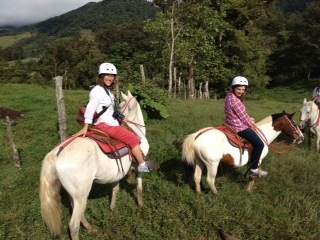 Once travelers touch down in San Jose, they’re often in a rush to drive to Arenal Volcano or Monteverde and the Cloud Forest. That’s unfortunate, because you’re missing one of my favorite parts of the country, the farmland on the backside of Poas Volcano, only an hour’s drive from the airport. 5,000 feet high, also considered part of the Cloud Forest, this is as green and cool as the country gets. The verdant terrain features some of the best waterfalls in the country, plummeting down to rarely seen lakes. At Peace Lodge and El Silencio, we walked by ourselves to a series of waterfalls, all more dramatic than the next. El Silencio is located in the farming community of Bajos del Toro. One afternoon, we went horseback riding up the hillside, stopped to milk cows and meet the locals, then wandered back through town to our room. The view from our deck was a stunning flank of the volcano, surrounded by the lush foliage. Adding to the allure are the multitude of hummingbirds found in this part of the country.
Once travelers touch down in San Jose, they’re often in a rush to drive to Arenal Volcano or Monteverde and the Cloud Forest. That’s unfortunate, because you’re missing one of my favorite parts of the country, the farmland on the backside of Poas Volcano, only an hour’s drive from the airport. 5,000 feet high, also considered part of the Cloud Forest, this is as green and cool as the country gets. The verdant terrain features some of the best waterfalls in the country, plummeting down to rarely seen lakes. At Peace Lodge and El Silencio, we walked by ourselves to a series of waterfalls, all more dramatic than the next. El Silencio is located in the farming community of Bajos del Toro. One afternoon, we went horseback riding up the hillside, stopped to milk cows and meet the locals, then wandered back through town to our room. The view from our deck was a stunning flank of the volcano, surrounded by the lush foliage. Adding to the allure are the multitude of hummingbirds found in this part of the country.
Costa Rica Highlights, The Exquisite Arenas del Mar
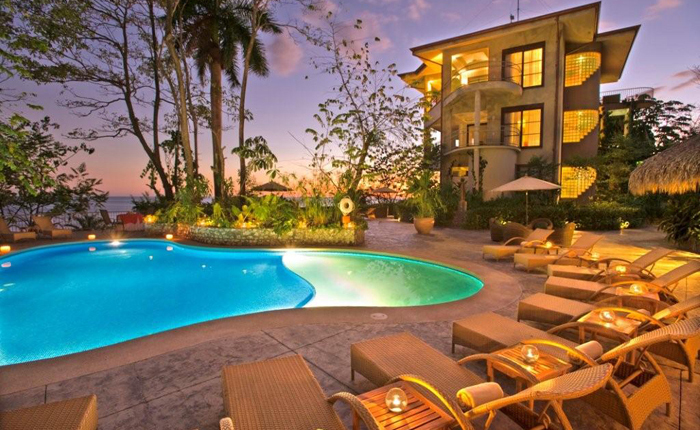 I’m just back from over two weeks in Costa Rica with the family. Even though the summer is the wet season in Costa Rica, the weather was perfect, usually raining at night to enhance our sleep. And the country is incredibly lush this time of year. This week, I want to discuss the highlights of the trip so you can put it on your checklist when planning your own jaunt.
I’m just back from over two weeks in Costa Rica with the family. Even though the summer is the wet season in Costa Rica, the weather was perfect, usually raining at night to enhance our sleep. And the country is incredibly lush this time of year. This week, I want to discuss the highlights of the trip so you can put it on your checklist when planning your own jaunt.
